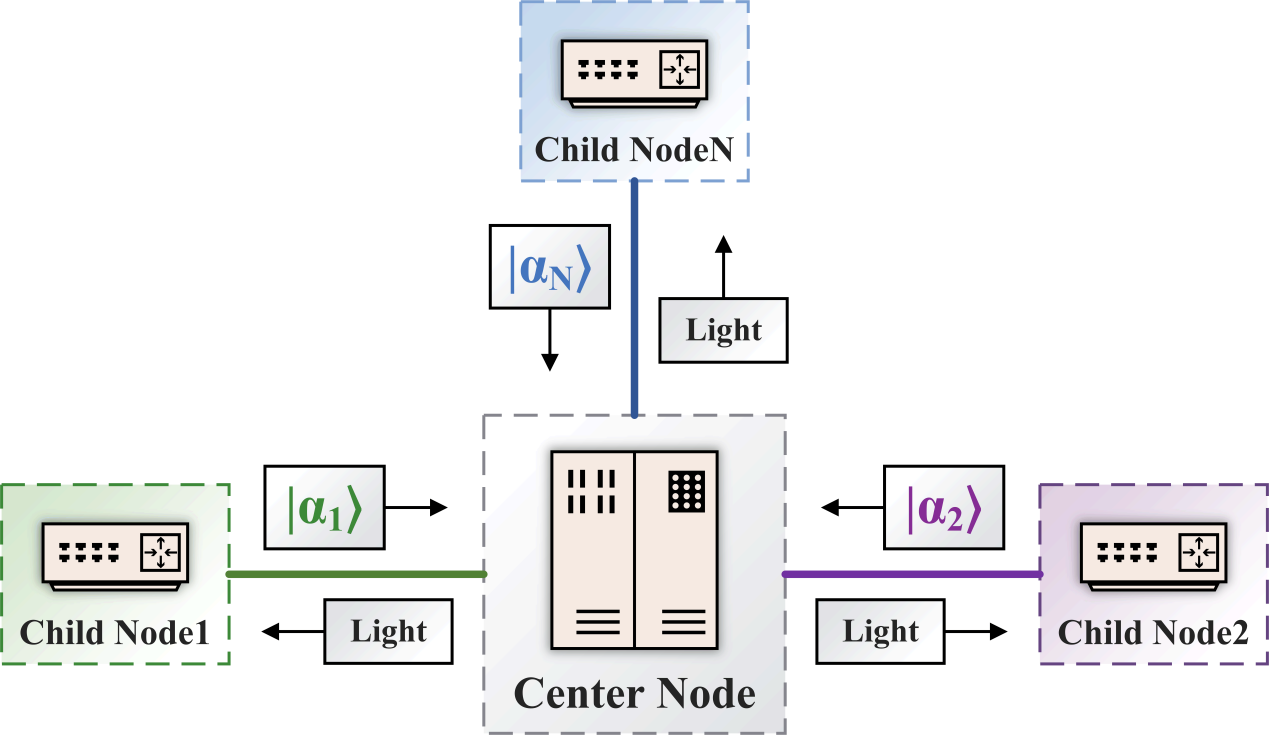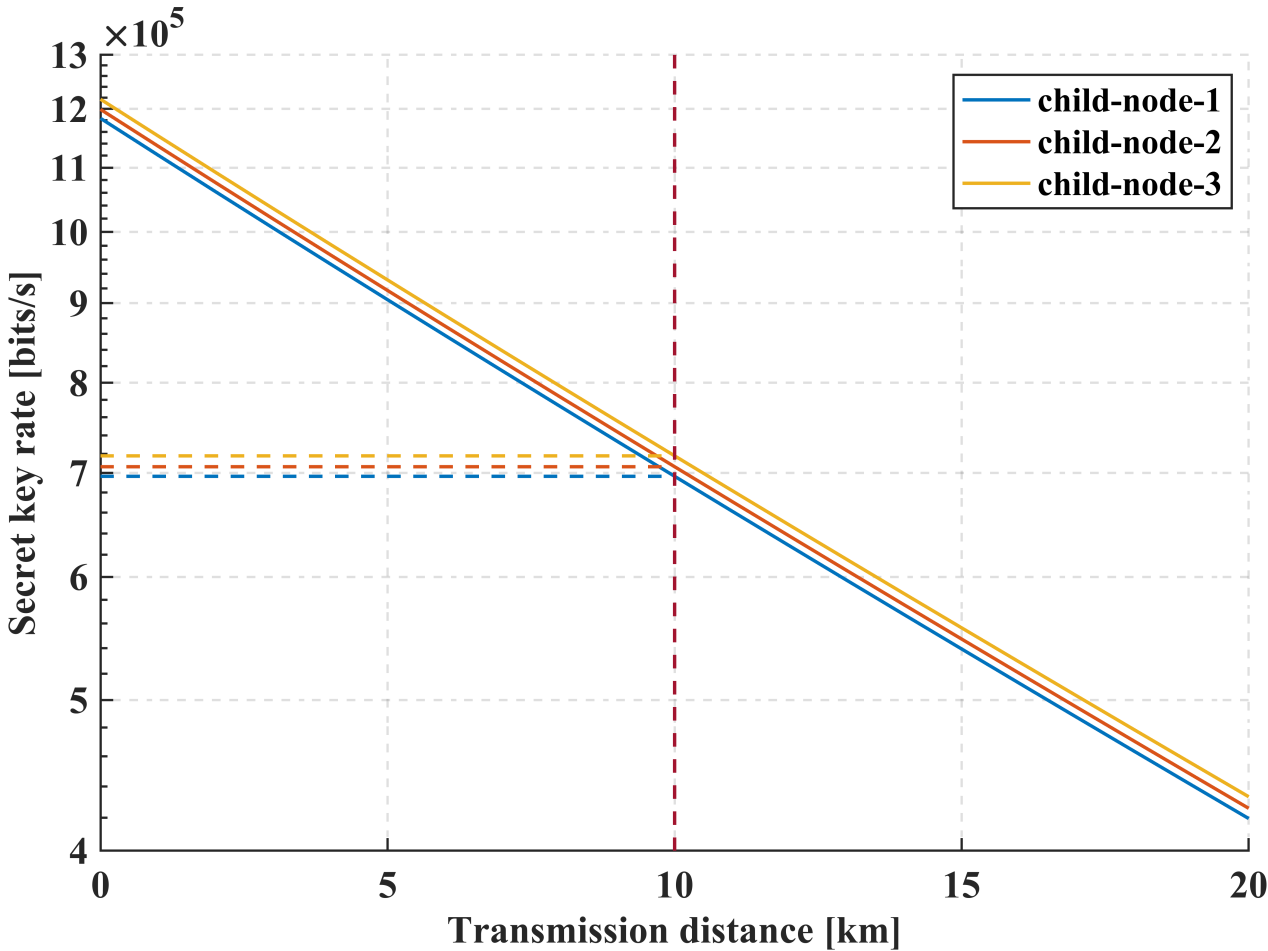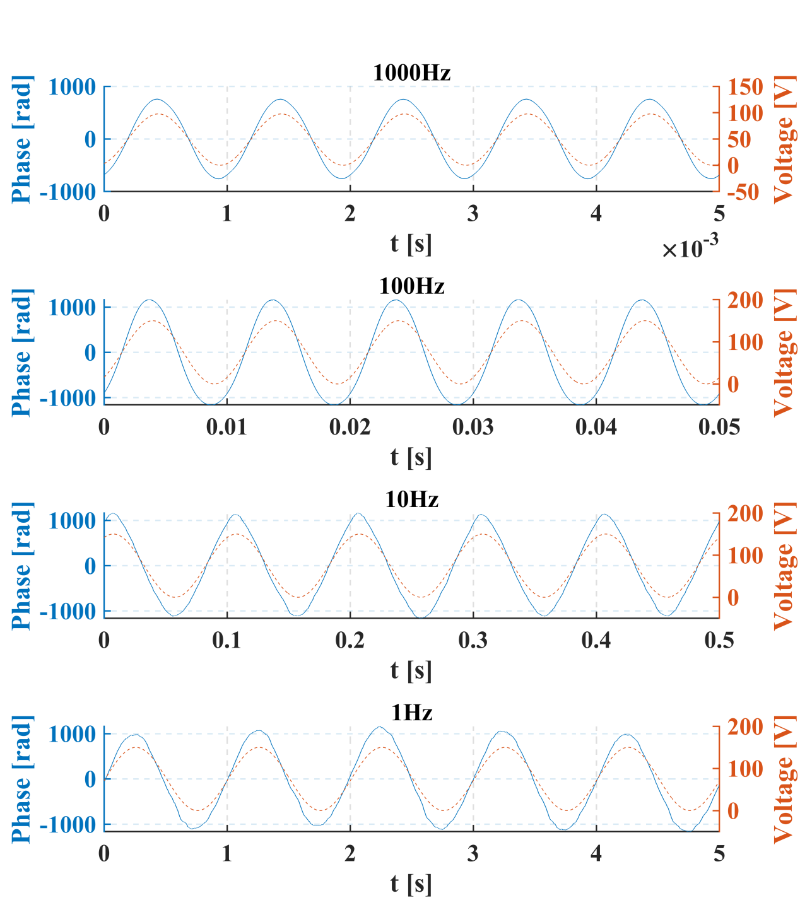
-
Integrated distributed sensing and quantum communication networks
2024-07-17
Professor Guihua Zeng's team at Shanghai Jiao Tong University has proposed a scheme integrating sensing and quantum networks, which can achieve secure key distribution and distributed sensing among multiple nodes under the standard quantum limit.
Research Background
Due to the sensitivity of communication media to environmental changes, communication media can be used not only for information transmission but also for sensing. Thus, the concept of integrated sensing and communication (ISAC) emerged. ISAC requires sensing to be conducted simultaneously during the communication process, rather than building a separate sensing network. Its goal is to achieve ubiquitous integrated sensing and communication networks, providing large-scale sensing for urban structure imaging, seismic wave detection, pipeline safety monitoring, etc. Quantum communication is one of the most concerned communication methods.
Quantum key distribution (QKD) is the core technology of quantum communication, providing secure keys for legitimate parties guaranteed by the basic principles of quantum mechanics. Quantum states used in QKD are very sensitive to changes in phase, amplitude, wavelength, etc., and environmental disturbances can cause corresponding changes. An integrated sensing and quantum network (ISAQN) requires the differentiation of QKD signals and sensing signals from different nodes. However, since both sensing information and key information are loaded onto the same coherent state, extracting the key information and demodulating the sensing information pose challenges.

Figure 1. Point-to-multipoint quantum communication network

Figure 2. Integrated distributed sensing and quantum communication networks
Research Progress
In order to achieve signal sensing in multi-point QKD networks, Professor Guihua Zeng's team at Shanghai Jiao Tong University proposes the time-frequency-multiplexing ISAQN. This scheme utilizes both quantum signals and pilot signals for transmission. Quantum signals are used for continuous variables QKD (CV-QKD), while pilot signals are used for sensing.
Additionally, the pilot signal inserted by the time division multiplexing (TDM) can restore the phase of the quantum signal. For multiple nodes, authors use frequency division multiplexing (FDM) to transmit multiple QKD signals of different nodes. When the vibration is happening, the nodes experiencing vibrations can be determined and the vibration waveform can be restored based on the spectrum phase monitoring (SPM) protocol. The precision of ISAQN's distributed sensing can reach the standard quantum limit. To demonstrate the feasibility of our scheme, experiments were carried out by simulating the vibration in a star network structure.
The schematic diagram of ISAQN in the frequency domain and time domain is shown in figure 3. Different child node modulates quantum signals and pilot signals with different carrier frequencies. Then, they are converged through the optical fiber to the splitter and enter the detector for coherent detection. When the modulated coherent state and pilot signals do not experience fiber vibration events, the detected results remain a normal multi-band signal. When a vibration event occurs, the spectrum of the detected results experiences spectrum castdown due to the enhancement of Rayleigh backscattering, and the spectrum of the pilot experiences spectrum splitting in its centerline. The detection results are processed using the spectrum phase monitoring (SPM) protocol. By employing coherent demodulation, arctangent, and phase unwrapping, phase recovery can be accomplished, thereby obtaining the vibration waveform.

Figure 3. Schematic diagram of ISAQN in the frequency domain and time domain
To demonstrate the feasibility of this scheme, experiments are carried out by simulating vibrations in a star network structure, as shown in figure 4. The light from the center node is split by a beam splitter into a high-power local oscillator and low-power light which passes through a variable optical attenuator and an optical circulator. This light passes through another VOA for power balance, is modulated via an arbitrary waveform generator, and then reaches child nodes. Then, the signal enters an optical fiber wound around the piezoelectric transducer, which is used to simulate vibration events. After passing through the optical fiber, the signals are merged back via BS, and return to the center node where polarization is adjusted again before reaching the integrated coherent receiver.

Figure 4. Experimental structure diagram of ISAQN
Future Expectations
ISAQN has been verified both theoretically and experimentally. The experimental results shown in figure 5 and figure 6 demonstrate that the network is capable of distinguishing quantum signals and sensing signals from different child nodes simultaneously. This capability significantly enhances the network's application flexibility and information processing capacity. The proposed ISAQN scheme achieves simultaneous quantum communication and distributed sensing in a multi-point network, which is of great significance for the future construction of ubiquitous quantum communication networks and high-precision sensing networks. This progress marks a step forward toward multifunctional quantum networks and a practical quantum internet.

Figure 5. Experimental results of multi-point quantum key distribution
Figure 6. Experimental results of sensing experiments under different conditions
Tag: Quantum Information
Source: https://spj.science.org/doi/10.34133/research.0416
